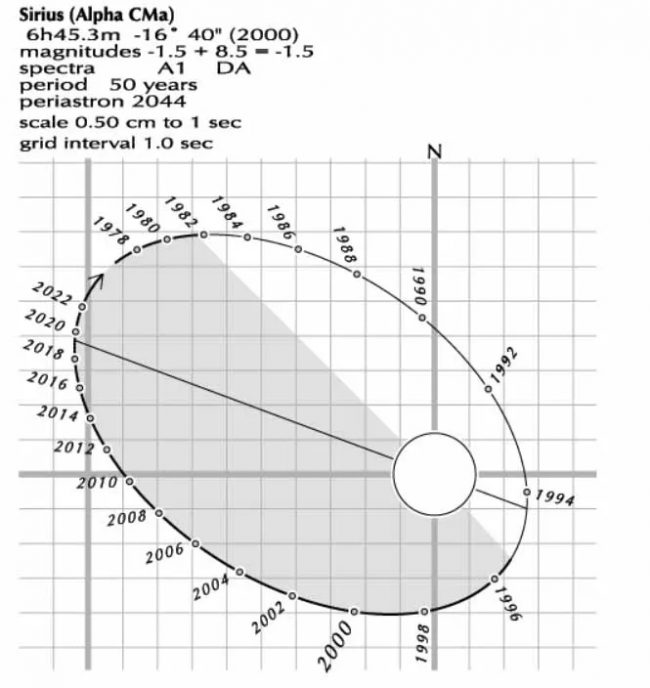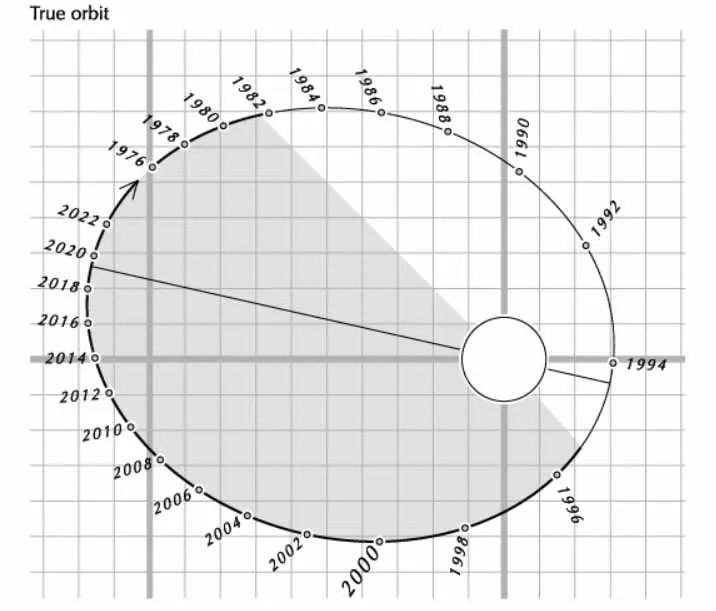
Originally published on March 9, 2022, at Guy Ottewell’s blog. Reprinted with permission. Sirius the Dog Star is the brightest star in Earth’s night sky. But did you know that Sirius is also a double star? Its companion is much fainter, and skywatchers with telescopes find the 2 stars challenging to “split” or separate. These new charts from astronomer Guy Ottewell show why now is a good time to try to split Sirius from its companion Sirius B. And Guy also provides a chart of another well-loved double star – Albireo in Cygnus the Swan – illustrating why the 2 components in the Albireo system might not be gravitationally bound. Read about 2 very different double stars, Sirius and Albireo, below.
Sirius and Albireo: 2 famous double stars
The diagram shown above – of a sort that I’ve gradually improved since the second year of my long-running Astronomical Calendar – shows what to expect of the sky’s brightest star, in a view through a telescope. The star is Sirius in the constellation Canis Major the Greater Dog. In the diagram above, the grid lines are at intervals of one second of arc (the size of a cent or dime, a kilometer away). The symbols for Sirius A, and its very faint companion Sirius B, are sized for their magnitudes (brightnesses), not for their apparent sizes, which are point-like as seen from Earth, even through telescopes.
As you see from the dates, Sirius B is just past its apastron, that is, the outermost point of its orbit around Sirius A. Note that, in the diagrams above and below, Sirius B is now at the end of the diagonal line between the two stars. It’s therefore at its least difficult right now to disentangle from the rays of its brilliant primary star.
Read more: Learn how to find Sirius B

Albireo is a colorful double star
The diagram below shows Albireo, a yellow and blue pair, and a much wider pair than Sirius. In contrast to Sirius A and Sirius B, no revolving motion around each other – of the two stars we see as Albireo – has been detected. So the two stars we see as Albireo might not be gravitationally bound. Whether they are – or not – is a matter of debate among experts.
So to draw a picture of such a double-star system, my program had to be adapted, a disentangling process that was surprisingly intricate and took me three days. It would now serve also for the many others pairs mentioned in double-star catalogs that are merely optical: stars that happen to be in the same line of sight but are at different distances.
If you’ve ever had the pleasure of viewing Albireo through a telescope, you know the two stars provide a distinct, and very pretty, color contrast. One star is blue, and the other is often described as “golden.”
So why, in my diagram, is Albireo A shown as orangish, rather than pure yellow? The main spectral types are O, B, A, F, G, K, M, in order of decreasing surface temperature. G stars, such as the sun, are yellow; M stars are red (though star colors are pale, differing only subtly from white). So K stars are “orange.” I make my program color stars by their spectral type. But Albireo A’s type is, more exactly, K2, which verges on G.

A word about seeing colors in double stars
Because stars appear only as points, their colors are hard to perceive. And colors stand out most, and appear to differ most, when they are contrastingly adjacent; this applies to bricks in walls, paints in pictures, as well as to stars. And so the literature on double stars is rich with attempts to give names to personal impressions. Here is part of what is said about Albireo in that classic of astronomy, Robert Burnham’s Celestial Handbook (of 1978, so some of the figures differ):
Albireo is one of the most beautiful double stars in the sky, considered by many observers to be the finest in the heavens for the small telescope. The brighter star is a golden yellow or ‘topaz,’ magnitude 3.09, spectrum K3; the ‘sapphire’ companion is magnitude 5.11, spectrum B8 V. The separation is 34.3 arcseconds, an easy object for the low-power telescope. Even a pair of good binoculars, if steadily held, will split the pair.
Albireo is noted for its superb color contrast, best seen with the eyepiece slightly displaced from the sharpest focus. Miss Agnes Clerke (1905) called the tints ‘golden and azure,’ giving perhaps ‘the most lovely effect of color in the heavens.’ For the average amateur telescope, there is probably no pair so attractive, though the color effect seems to diminish in either very small or very large telescopes, or with too high a magnification. No more than 30X is required on a good 6-inch to show this superb pair as two contrasting jewels suspended in a region that is wonderfully rich, and for wide-angle telescopes the star clouds to the northeast are probably unequaled in splendor in the entire heavens.
Bottom line: Learn more about the double stars Sirius and Albireo with these helpful charts from Guy Ottewell.











